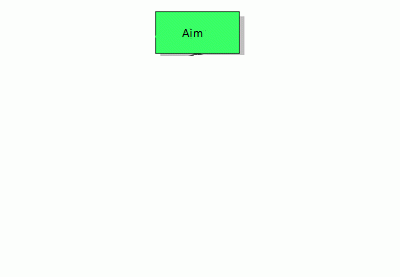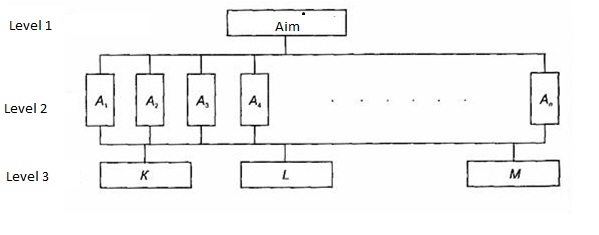Abstract
Content
- Introduction
- 1. Relevance
- 2. Aims and objectives of the study
- 3. Model analysis of the creditworthiness of borrowers
- 4. The method of analysis of hierarchies
- Conclusion
- References
Introduction
In the last five years, the world financial system can cope with the crisis and, therefore, the banks increased the level of risk, and in particular the risk of not returning the loan the loan. Relevant to the banking system is the use of models, credit analysis. The banking risk – the probability of incurring losses in the form of loss of assets, the expected shortfall in income or appearance is not planned expenditure as a result of financial transactions by the bank.
The risk arises in connection with the movement of financial flows and characterized by great diversity, and the need for effective management entails the need to improve existing models of credit risk, therefore, this topic is relevant. Interpretation of the bank's risk profile is still ambiguous. In the economic literature can be found a variety of definitions of risk, but they all boil down to one thing – the above.
Banks operate in a market economy and the implementation of its activities aimed at maximizing profit. Apart from the fact that the activities of banks affected by the general risks it is characterized by risks arising from the specific type of activity. Specificity of the risk of banking is that the level of risk which the bank takes over, is largely determined by the level of risk that it is objectively or subjectively receives from its customers. The higher the level of risk inherent in the type of business the bank's clients, the greater the risk that the bank expects when working with these clients.
Transactions related to the involvement in the money market is temporarily free funds and placing them in different types of assets (including loans) are responsible for a particular dependence of banks on the financial stability of their clients, as well as the state of the money market and the state's economy as a whole. Banking risks include economic risks in the system, in which he is both an independent view of risk.The issue of risk in the economy is very important, since it is closely related to decision making under conditions of information uncertainty [1].
1. Relevance
Acute problem in the XX–XXI century. was to study the risks. A society that, despite all the measures, failed to prevent global conflicts, international crises, environmental disasters, in the end, realized the need for a mandatory risk assessment in each activity before deciding to implement it.
Risk plays a special role in the economy and management, which both domestic and foreign markets are impossible without uncertainty, chance, and conflict arising from different origins: natural events, political events, tax regulations and many other factors.
Over the past few years the Ukraine violent pace of lending to developing, including individuals. Therefore, there is a need to assess and predict risks. Outstanding loans, especially large ones, can lead to bankruptcy of the bank, and by virtue of his position in the economy, to a number of bankruptcies, related companies, banks and individuals. Therefore, the main type of risk in lending is credit.
Today there are various risk assessment techniques that are used by banks. However, the rapid development of the banking system, including lending, entails the need to improve existing models of credit risk, therefore, this topic is relevant.
Information collection and analysis are among the most important part of assessing bank risk. Only after this phase, you can begin to identify factors that may lead to potential losses of the bank, and the measurement of risk. The object of this study is a system of risk assessment when granting credit to individuals. The subject of the study are a model for risk assessment when granting credit to individuals.Research methods – the method of hierarchy analysis and integrated assessment model.
2. The aims and objectives of the study
The aim of this work – to establish the laws, depending on the formation of the risks when granting loans to individuals for the development of credit risk assessment to minimize credit risk. The idea of the work consists in analyzing and using models of credit risk assessment for the establishment of a system adapted to the peculiarities of individuals.
The objectives of the work are:
- Carry out an analysis of existing models of credit risk;
- To collect and analyze statistical data to establish statistical relationships;
- Development of a model allowing to evaluate the credit risk;
- Development of risk assessment when granting credit to individuals in the form of a software product designed to use in the process of lending by commercial banks;
- Experimentation with risk assessment using the analytic hierarchy process;
- Experiments with a model of integrated assessment;
3. Model analysis of the creditworthiness of borrowers
Modern approaches to the practical methodology for analyzing the creditworthiness of borrowers in commercial banks based on the integrated application of financial and nonfinancial criteria [2].
All methods of assessing the credit can be divided into two major groups:
- Classification, including the need to allocate credit score model ball (rating method) and bankruptcy prediction models (statistical estimates based on the MDA – Multiple Discriminate Analysis – multiple discriminant analysis);
- Models of complex analysis (based on a "semi–empirical 'methodologies' rules 6C", CAMPARY, PARTS, Judgmental Analysis (grading system analysis) – is used to assess consumer credit) [3].
Classification models can be divided into groups (classes) and is an auxiliary tool in determining the capacity to meet the credit application.
Fairly well covered in the literature in two models: ball (ranking) assessment and prediction of bankruptcy. Rating models divide borrowers into good and bad, and forecasting models try to differentiate the bankrupt firm and stable company. Rating of the company – the borrower is calculated on the basis of the obtained values of financial ratios, and is expressed in points. Points are calculated by multiplying the value of any indicator of its weight in the integral indicator (rank)
In the commercial banks is also used scoring system. Credit scoring (kredit scoring) – technique proposed by the American economist D.Dyuranom in the early 40s for the selection of borrowers in consumer credit.
Unlike credit scoring by rating is that the formula is rated rather Ki (the values of i–index) is Bi – private ballroom score of i–th indicator. In addition, for each indicator are determined by several ranges of values, and each interval is assigned a certain number of points or define a class (1, 2, 3 ...).
The advantage of the rating model is its simplicity: it is enough to calculate financial ratios and weigh them to determine the class of borrower. However, it should be remembered that in calculating the rating may be involved only those values that meet the established standards. Predictive models are used to assess the quality of potential borrowers, and are based on statistical methods, the most rasprastranennymi of which is a multiple discriminant analysis (MDA), also known as "cluster analysis".
4. The method of analysis of hierarchies
The method of analytic hierarchy process (AHP) is a systematic procedure for the hierarchical representation of the elements that define the essence of any problem. The method consists in decomposing the problem into smaller parts and simple components for further processing of the sequence of judgments of the decision, the paired comparisons. The result can be expressed as the relative degree (intensity) of the interaction of elements in the hierarchy. These judgments then expressed numerically [4].
The method of analysis hierarchy includes procedures for the synthesis of multiple judgments, obtaining priority factors and to find alternative solutions. The thus obtained values are estimates of the ratio scale, and correspond to the so–called hard estimates. The solution is a phased process of setting priorities and include:
- Identification and selection problems;
- Decompose the problem into a hierarchy;
- Construction of matrices of paired comparisons, the calculation of priorities, the largest eigenvalue of the matrix of judgments, the index of consistency and coherence relations;
- Calculation of global priorities.
Hierarchy occurs when a system that functioned as a unit on one level, function as part of a higher level, becoming the subsystems of the system. The hierarchy is complete if every element of a given level of functioning as a factor (criterion) for all elements of the lower level [5].
Decision–making tasks acute for:
- Personnel management;
- Economists;
- Financiers;
- Sociologists;
- Policies;
- Consultants;
- Appraisers;
- Health workers;
- The military;
- Psychologists;
- Social workers;
- Scientists.
And in all these cases is possible to use the analytic hierarchy process.

Picture 2 – Diagramm of the analytic hierarchy process.
(animation: 6 pictures, 48 kb)
Conclusions
Analysis of credit – is not simply a calculation of the coefficients and the results are compared with the standards, but much more time–consuming process that requires time–consuming and demanding for the qualification of an employee of the bank. Each individual method has its drawbacks. But together they can comprehensively assess the risk of a credit transaction. The methods analyzed in this paper, using different indicators, qualitative and subjective. Are more accurate classification methods, but they are harder to use, implementation, and interpretation. However, the association of different methods of classification can provide a reduction in the subgroup of bank risk to the minimum value.
This abstract is based on the uncompleted master's work. Date of completion of master's work is December 2012.
References
1. Анализ кредитных рисков / Костюченко Н.С. – СПб.: ИТД "Скифия", 2010. – 440 с.
2. Хабибуллина А.И. Модели анализа кредитоспособности // "Вестник НБУ" №1, 2012. 43–47 с.
3. Малин А.С., Мухин В.И. Исследование систем управления: Учебник для вузов. – 2–е изд. – М.: Издательский дом ГУ ВШЭ, 2004. – 357 с.
4. Применение метода анализа иерархий в практике научных исследований – Насыров Р. В., Тайгина Е.А., Фарукши Р.М.
5. Технологии принятия решений: метод анализа иерархий – Режим доступа к рес.: http://citforum.ru/consulting/BI/resolution
6. Плаксин М. Метод анализа иерархий как инструмент обоснования бизнес–решений // International Conference "e–Management & Business Intelligence" 2007
7. Економічний ризик і методи його вимірювання: Навчальний посібник. Київ: Центр навчальної літератури, 2003. 188 с.
8. Ларин С., Ходжаева И. Оценка кредитоспособности физических лиц: Статья.

